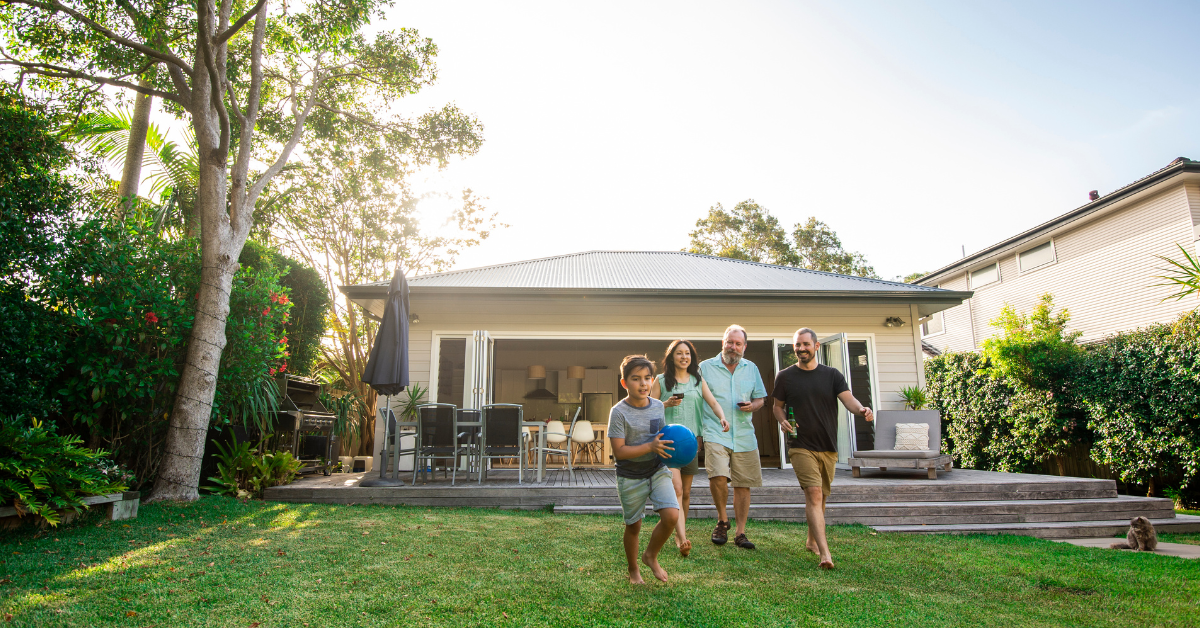In this article:

Australia’s housing market is facing a surprising contradiction. Most of our households are getting smaller, yet the homes we’re building are getting bigger.
New research from Cotality shows more than 60% of Australian households are made up of just one or two people. But when you look at our housing stock, almost three quarters of dwellings have three or more bedrooms. That raises some important questions about affordability, supply, and whether the homes we’re building really match the way we live today.
Is there a mismatch between how buyers want to live and the homes that we’re building? And is that creating significant challenges across the property market, from affordability to accessibility?
Why It’s Happening
The trend towards building bigger homes for smaller households isn’t accidental. It’s the result of a combination of cultural norms, economic drivers, and personal aspirations.
One of the main drivers is our cultural expectation of what a home should be. The “Great Australian Dream” has long been tied to owning a spacious house on a block of land.
This ideal persists even as our family structures change. Many couples without children or singles buy larger homes with the future in mind, planning for kids down the track or wanting extra space for a home office, gym, or guest room.
Lifestyle changes also play a huge role. The rise of remote work has made a dedicated workspace a near necessity for many. Having extra rooms for hobbies, visitors, or even future in-home care for ageing parents adds to the appeal of a larger property.
Furthermore, the available land supply, particularly in new developments on the fringes of our cities, is often better suited to larger, more profitable house-and-land packages.
Developers find it more economical to build four-bedroom homes than smaller, more diverse housing options. This supply-side factor pushes the market towards bigger properties, whether they suit the buyer’s immediate needs or not.
Is There a Problem?
Cotality’s Eliza Owen says that “couples without children and people living alone make up the majority of households, raising questions about how well our housing market is serving real demand.”
Cotality’s research revealed:
- 27% of households are single-person.
- 34% are two-person.
- Only around 30% are families with dependent children.
- In other words, six in ten Australian households are now made up of just one or two people.

Despite smaller household sizes, the homes we’re building are getting larger. Nationally:
- 42% of homes have three bedrooms.
- 28% have four bedrooms.
- Only 6% are studios or one-bedrooms.
“While there’s nothing wrong with more bedrooms than people in a dwelling, there could be some inefficiencies in the way housing is being allocated,” says Owen.
The Challenge for Affordability
This focus on larger homes creates a major hurdle for affordability. Bigger houses naturally come with bigger price tags and, consequently, larger mortgages. This prices many people out of the market, especially those who don’t need the extra space but have few other options.
For first-home buyers, the dream of homeownership can feel out of reach when the only available new builds are large family homes. The entry-level price point keeps rising, not just because of land value, but because the homes themselves are oversized for the needs of a single person or couple.
At the same time, there is a significant shortage of smaller, more affordable dwellings like one or two-bedroom apartments, townhouses, and units, particularly in well-located inner and middle-ring suburbs. This scarcity drives up competition and prices for the smaller properties that do exist, putting a squeeze on buyers at both ends of the market.
What buyers need to consider
When it comes to borrowing, the size of the property and the loan both matter. Some things to keep in mind:
- Loan serviceability: Bigger homes usually mean bigger mortgages. Lenders assess whether your income and expenses can support the repayments.
- Construction loans: If you’re building a new home, the size of the project impacts the loan amount and the staged drawdowns.
- Valuations: Lenders base their decision on the property’s market value, which may not always match what buyers are willing to pay.
What this means for borrowers
The mismatch between smaller households and bigger homes highlights how important it is to balance your housing goals with your borrowing capacity.
It’s not always about finding the biggest home you can afford. For many Australians, it’s about finding the right home for your household size, lifestyle, and budget.
That’s where a mortgage broker can make a real difference. Brokers can help you understand your options, compare different loan products, and plan around what’s realistic for your situation.



